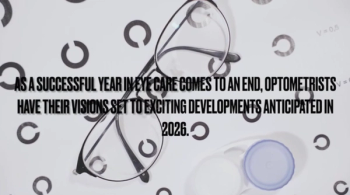
What happened in optometry this week: August 5 - August 9
Catch up on what happened in optometry during the week of August 5-August 9.
Catch up with what Optometry Times shared this week:
Novaliq receives positive CHMP opinion for dry eye treatment Vevizye
By Jordana Joy, Associate Editor
Biopharmaceutical company Novaliq has announced that the European Medicines Agency’s Committee for Medicinal Products for Human Use (CHMP) has adopted a positive opinion for the recommendation to grant a marketing authorization in the European Union (EU) for Vevizye.1 The positive opinion developed from the CHMP review was based off a comprehensive data package from more than 1500 patients with moderate to severe
Study finds untreated vision loss and high cholesterol are linked to increased dementia risk
By Lynda Charters
A new report in The Lancet identified untreated vision loss and high cholesterol as risk factors in the development of dementia.1
The Commission has now identified a total of 14 risk factors, with the latest ones, vision loss and high cholesterol, added to the list.
“Overall,” the Commission commented, “around 45% of cases of dementia are potentially preventable by addressing the 14 modifiable risk factors at different stages during the life course.”
How light adjustable lenses improve cataract surgery outcomes for patients with Dr. Jack Chapman
By Jordana Joy, Associate Editor, Grace Koennecke, and Jack Chapman, MD
Post-operative care for cataract surgery patients that are fitted with the light adjustable lens (LAL) has gotten easier since 2018 thanks to ActivShield, according to Jack M Chapman, MD. He told Optometry Times in an exclusive interview that patients don't mind the extra follow-ups because they appreciate the flexibility LALs give them to find what is comfortable for their eyes.
Study examines correlation between humidity, temperature, and air pollutants on dry eye disease patients
By Martin David Harp, Associate Editor, Ophthalmology Times
A recent study suggests that higher exposures to lower temperatures and certain air pollutants could result in worsened ocular symptoms and increased tear osmolarity in patients with
The study was a retrospective cohort study conducted on patients with DED at the Department of Ophthalmology, Gachon University Gil Medical Center, between February 2019 and August 2021.1 Patients included were over the age of 19 and had been diagnosed with DED based on the criteria outlined by the Korean Corneal Disease Study Group. Requirements from this study include the presence of at least 1 of the following: a tear break-up time (TBUT) of ≤ 10 s or positive ocular surface staining of Oxford grade ≥ 1.2.
Eyedaptic to unveil new AI-powered EYE6 smart glasses
By Jordana Joy, Associate Editor
Eyedaptic has announced the unveiling of its new smart glasses that harness the power of artificial intelligence (AI) in order to visually assist those with age-related macular degeneration and other retinal disorders that cause vision loss.1 EYE6, which is coupled with Eyedaptic’s interactive visual assistant named Ivy, will be introduced at the American Retina Forum National Meeting on August 7 in Carlsbad, California, according to a news release.
Newsletter
Want more insights like this? Subscribe to Optometry Times and get clinical pearls and practice tips delivered straight to your inbox.













































.png)


